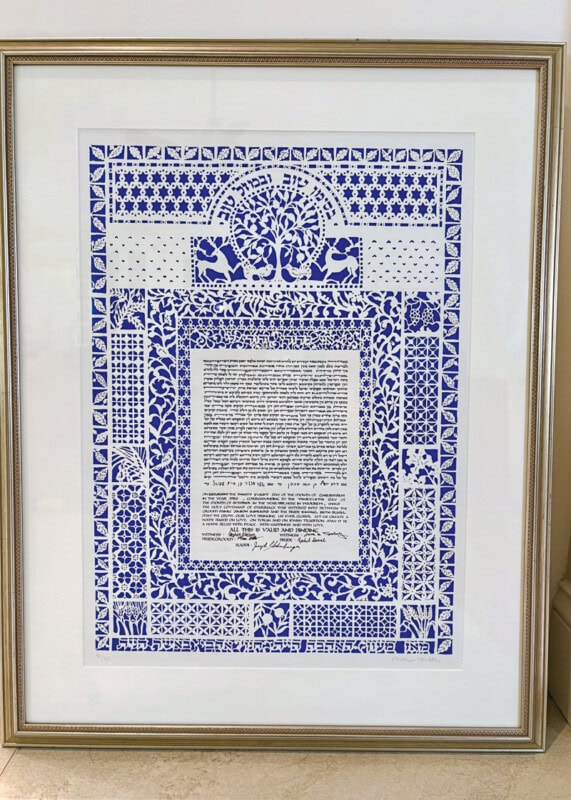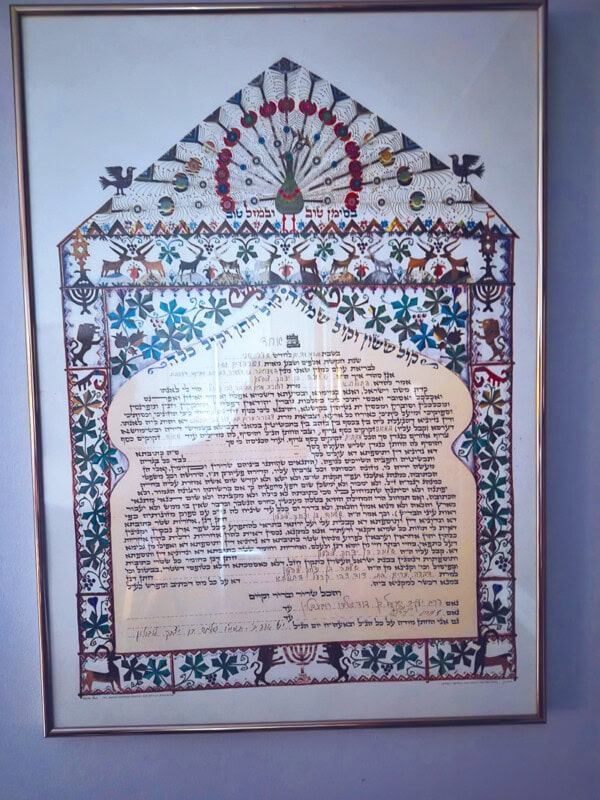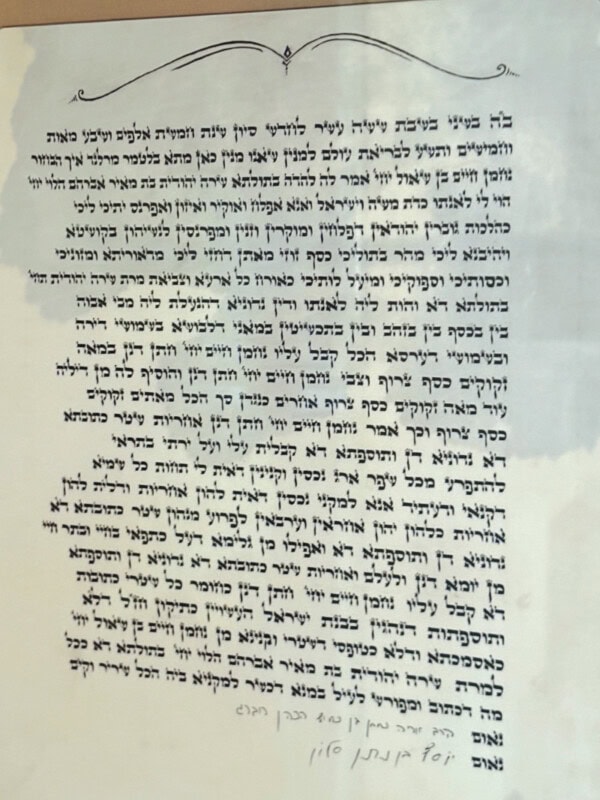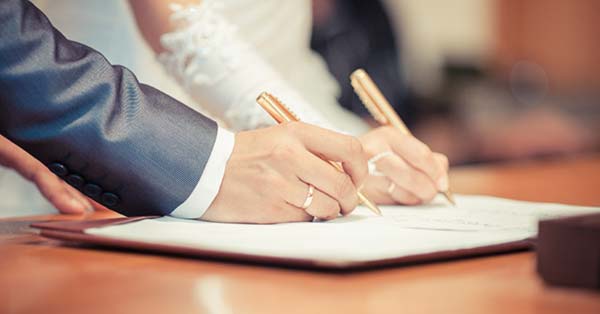The ketubah, or Jewish marriage contract, has traditionally spelled out the groom’s obligations to his wife, including financial responsibilities and his commitment to provide for his bride’s basic needs, such as food, shelter, and intimacy. In the orthodox tradition, the ketubah serves as a legal, protective document that shields a woman in the event the marriage is dissolved. Two witnesses, unrelated to both the bride and groom, sign the ketubah, confirming that the groom agrees to its terms and the bride accepts them.
In many homes, the ketubah also serves as a work of art, displayed on the walls not only for guests to see but to also remind the married couple of their wedding day. Modern-day ketubahs contain language for a variety of relationships, including interfaith, LGBTQ+ and nonbinary couples and offer unique design features including metallic, paper cut, and pop art.
Several Tidewater couples share the stories behind their ketubahs and how the marriage contract features into their daily, married lives.

Rachel and Marc Abrams
As told by Rachel
Married 25 years
While we don’t remember much about the process of picking our ketubah, we do remember we wanted one that felt modern but still a bit traditional to match the spirit of our wedding that was being held at my childhood synagogue. We immediately loved the paper cut style of the one we chose.
The day before our wedding, after the rehearsal, our families and closest friends came together to witness signatures. The rabbi, Marc, and I were all signing it, along with two of our closest friends. I remember being really emotional… until it was time for our friends’ part of the ceremony. One of our friends was feeling so much stress about signing such a beautiful piece of art that he was just frozen in his seat, not wanting to put pen to paper! Everyone ‘eventually’ signed and it was perfect!
It has moved from our newlywed apartment in Pittsburgh to Philly to three houses in Virginia Beach and, in all of them, has hung in our bedroom. Nearly 26 years later, it’s still a treasured piece and we love it!

Debbie and Shlomo Lubaton
As told by Debbie
Married 39 years
Our ketubah is proudly displayed in our dining room, where we have many multigenerational gatherings. Shlomo’s mother brought it from Israel, where Haim Ron from the Jewish Heritage Centre of Jerusalem designed it. My childhood rabbi and my husband’s childhood friend signed the ketubah on March 30, 1986. My mother-in-law was not happy I framed it; she wanted me to hide it as an insurance of our marriage.

Stephanie and Paul Peck
As told by Paul
Married 26 years
When my wife and I were getting married, we were unable to identify an artist or design that grabbed our simple tastes. It then occurred to me: What could be cleaner than the calligraphy on a Torah?
I asked Rabbi Aron Margolin if he knew a sofer, a scribe who writes Torah scrolls, mezzuahs, and the scrolls in tefillin, who might be willing to write a ketubah on parchment in the style of a Torah. After speaking with a New York-based sofer, the scribe first confessed he had never been asked to write a ketubah, but since it is fairly standard wording, he didn’t see how it could be that difficult.
The result is a beautiful, simple work of art. The black ink on the parchment matches the exact same words Jewish men promised their wives for centuries.
To the untrained eye, other than the signatures of one of our officiant’s, Rabbi Joel Zaiman (of blessed memory), and a dear friend, Jordan Slone, visitors to our home think it is just a section of a Torah that we have hanging on our wall.

